![]()
We hit the road with the sixth generation Hyundai Verna
Story: Anosh Khumbatta
Photography: Saurabh Botre
The Hyundai Verna has been a strong contender in the C segment since its launch back in 2006, consistently offering buyers an attractive combination of stylish exteriors, well-appointed interiors and powerful engines. The car has evolved through facelifts and newer versions over the last 14 years, going through ‘transformed’ and ‘fluidic’ phases, finally leading to the new-for-2020 Hyundai Verna splashed across these pages. Our test car is the top-end SX(O) variant powered by Hyundai’s 1.5-litre DOHC petrol-powered motor, mated to an eight-speed automatic transmission.
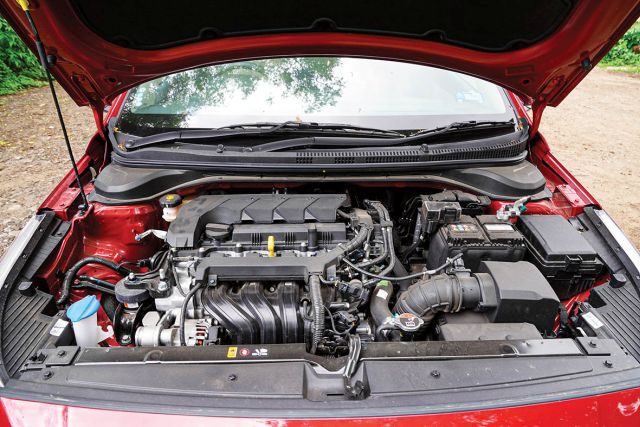
As you can see, the new Verna is quite a looker, with strong lines flowing back from that massive grille up front, over the sharp LED head lamps and on to the A pillars. The design of the front air dam and recesses for the fog lamps give the face some character, and while the large grille melds well with the design, I’m not a fan its heavily-textured, criss-cross chrome detailing, which is a little too gaudy for my taste. The roofline curves in an almost coupe-like fashion back towards the boot, where the diffuser on the lid adds a sporty touch. Angular LED tail lamps wrap around the rear edges just below the pronounced shoulder line, and the dual-tone 16-inch alloys look quite stylish.
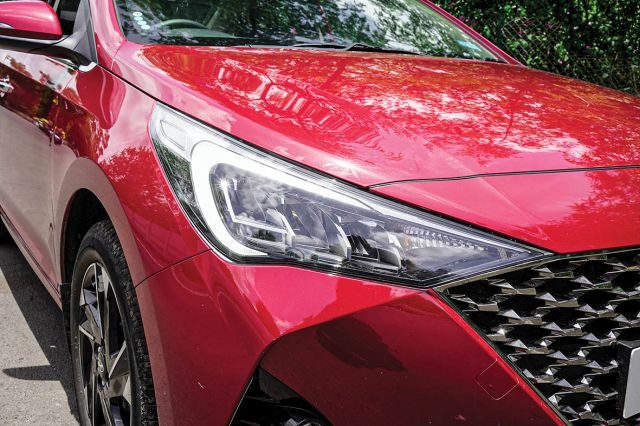
The interior of the new Verna is a pleasing contrast of beige and black, and surrounds occupants with soft and textured surfaces that all feel quite premium. Hyundai clearly know how to create attractive cabins. The centrally-located eight-inch full-colour touchscreen infotainment display is flanked by pair of vents, with the basic audio and air conditioning controls located just below. The driver interface is completely digital, with a speedometer on the left, tacho on the right and the space between the two used for warnings and notifications. The speedo lights up in the conventional clockwise direction, while the tacho mirrors it, and is calibrated counter-clockwise. While the snazzy cockpit graphics look attractive and upmarket, I found the display a little too cluttered to read at a glance.
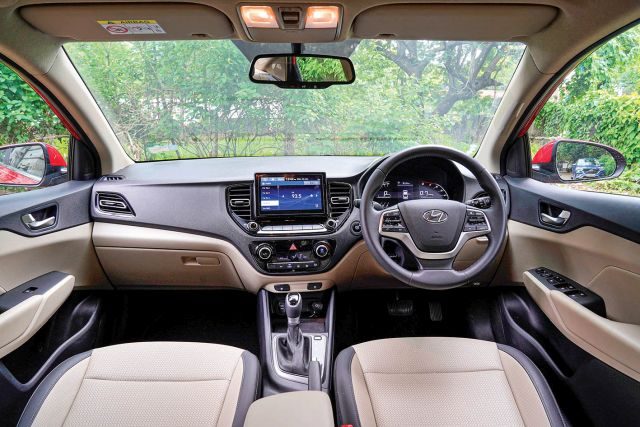
Hyundais have always boasted class-leading equipment levels, and the new Verna is no different. Occupants are pampered by leather upholstery, ventilated front seats, multiple USB power outlets, a sunroof, wireless charging for compatible mobile devices, a cooled glovebox, tyre pressure monitoring, automatic trunk unlock, rear sun blind and more, as well as the connected Blue Link technology that we have already seen on the Hyundai Venue and new Creta. Rear seats are comfortable and supportive, but limited knee and leg room may leave taller passengers feeling somewhat cramped.
The 1.5-litre four-cylinder DOHC motor powering our test car makes 115 hp at 6,300 rpm, with torque peaking at 144 Nm at 4,500 rpm, while the eight-speed CVT it is mated to does a fantastic job of keeping revs down. Drive with a light right foot and the Verna effortlessly picks up speed, the eight-speed IVT shifting up early to keep revs between 2,000 and 3,500 rpm. Put your foot down and the transmission holds on to ratios longer, shifting up at around 6,000 rpm, but if that’s how you drive you would much rather pick the optional 120 hp 1-litre turbo petrol motor with its DCT transmission. I found that the best way to drive our test car was to enjoy its midrange as it picked up speed, rather than constantly revving it to the moon, since it would start to feel somewhat strained upwards of 5,000 rpm. Once up to speed the car feels extremely stable and unstressed, and cruises along comfortably at 150 to 160 km/h at under 4,000 rpm. Ultimately, the Verna strikes a fine balance between peppy acceleration at city speeds and relaxed high-speed cruising out on the highway.
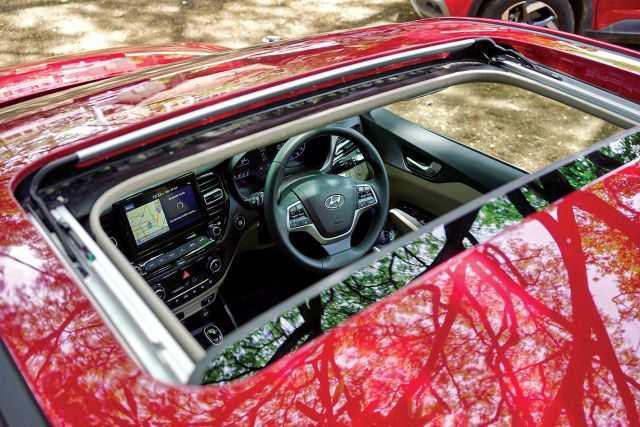
During our performance testing the new Verna dispatched 60 km/h from a standstill in just over six seconds, while 100 km/h came up in under 13 seconds. While blazing acceleration and exciting performance may not be what this car is all about, its forte seems to be effortless cruising at triple-digit speeds on the highway, while economically sipping fuel at low revs.
This car uses a MacPherson strut with coil spring front suspension, with a coupled torsion beam at the rear, and I found these set up quite well. The car was neither too bouncy over bumps, like some past iterations have been known to be, nor was it wallowing in the corners. Bad roads and sudden undulations are easily absorbed without fuss, and the car feels extremely stable throughout. The leather-wrapped steering wheel feels well weighted and direct, and the new Verna is quite involving through a set of corners, holding its line well. Up the pace some body roll will become apparent, although the car never feels twitchy or nervous.
![]()
Hyundai have done a fine job with the new Verna, building on their reputation of creating feature rich stylish cars with comfortable, upmarket interiors. The only real obvious downside to this car is the lack of space at the rear, but if you are looking for a feature-rich daily driver with a stylish interior and head-turning design, the 2020 Verna is worth considering.










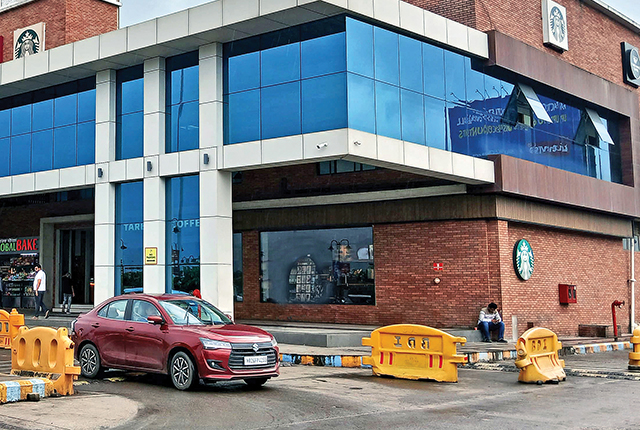










Leave a Reply